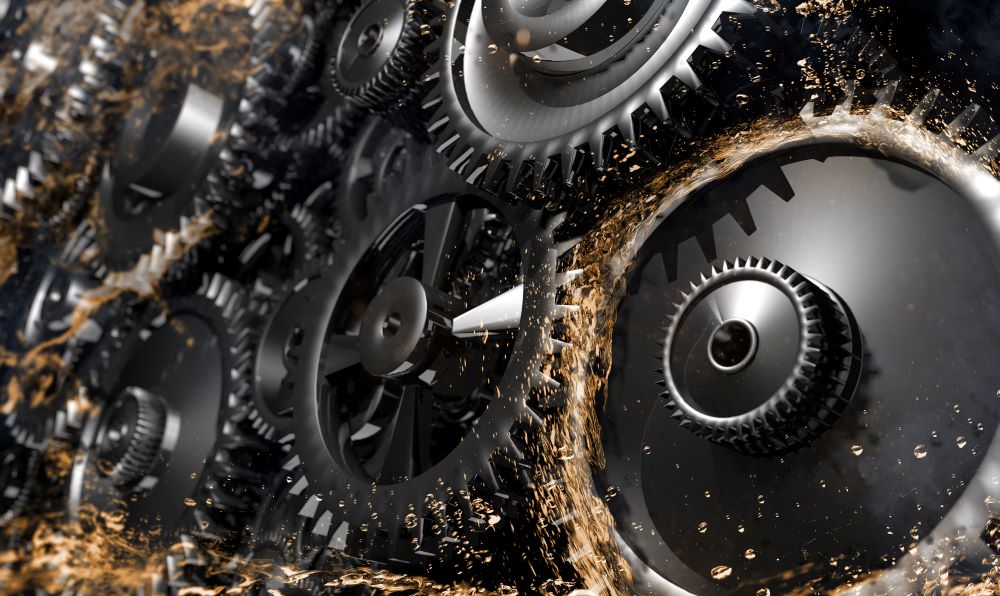Heavy-duty gear systems are the backbone of industrial machinery, facilitating smooth and efficient power transmission in large-scale operations. Whether in construction equipment, manufacturing plants, or other heavy industries, these robust components ensure reliability, durability, and optimal performance. With advancements such as powder metallurgy gears enhancing strength and precision, understanding their functions, types, and maintenance requirements is crucial for anyone involved in heavy machinery operations.
The Role of Heavy-Duty Gear Systems
At their core, heavy-duty gears are responsible for transferring power and torque between mechanical components. They help regulate speed, enhance force, and ensure smooth operation under extreme loads. These gear systems are commonly found in:
- Construction Equipment – Bulldozers, cranes, and excavators rely on gears to operate efficiently under heavy stress.
- Manufacturing Machinery – Assembly lines and automated systems depend on gear mechanisms for precision and consistency.
- Agricultural Equipment – Tractors, harvesters, and other farm machinery require gears to manage heavy workloads.
- Mining and Drilling Equipment – High-torque gear systems enable deep drilling and material extraction in challenging environments.
Types of Heavy-Duty Gears
Understanding the different types of gears used in heavy machinery can help with selecting the right components for specific applications.
1. Spur Gears
Spur gears are the simplest and most commonly used type of gear, featuring straight-cut teeth that transfer motion between parallel shafts. They are efficient for transmitting high torque but can be noisy at high speeds.
2. Helical Gears
Unlike spur gears, helical gears have angled teeth, which allows for smoother and quieter operation. They are ideal for heavy-duty applications where noise reduction and efficiency are essential.
3. Bevel Gears
Bevel gears are used when power transmission needs to occur at an angle, typically 90 degrees. These gears are common in vehicle differentials, industrial machinery, and heavy construction equipment.
4. Worm Gears
A worm gear consists of a worm (screw) and a gear that meshes with it. This setup provides high torque multiplication and self-locking capabilities, making it suitable for conveyor systems and lifting mechanisms.
5. Planetary Gears
Planetary gear systems consist of a central sun gear, multiple planet gears, and a surrounding ring gear. This configuration allows for compact and highly efficient torque transmission, making it ideal for industrial applications requiring high power density.
Key Factors in Gear System Performance
Several factors determine the efficiency and longevity of heavy-duty gear systems:
1. Material Selection
The durability of a gear depends on the materials used in its construction. Common materials include:
- Steel – The most widely used material due to its strength and wear resistance.
- Cast Iron – Provides excellent durability and vibration dampening.
- Bronze – Often used in worm gears for its self-lubricating properties.
- Composite Materials – Lightweight and corrosion-resistant options for specific applications.
2. Lubrication and Cooling
Proper lubrication reduces friction, minimizes wear, and prevents overheating. Gear oils and greases must be chosen based on load requirements, operating temperatures, and environmental conditions.
3. Load Capacity and Torque Ratings
Gears must be designed to handle the expected torque and load requirements without excessive wear or failure. Overloading a gear system can lead to premature damage and operational inefficiencies.
4. Precision in Manufacturing
High-quality machining and precise gear tooth alignment ensure smooth power transmission and reduce the risk of mechanical failures. Advanced manufacturing techniques, such as CNC machining and heat treatment, enhance gear performance.
Common Gear Failures and How to Prevent Them
Despite their durability, heavy-duty gears can experience wear and failure due to various factors. Here are some common issues and ways to prevent them:
- Excessive Wear – Caused by poor lubrication, contamination, or misalignment. Solution: Regular lubrication and maintenance checks.
- Pitting and Surface Fatigue – Due to prolonged high loads. Solution: Using high-quality materials and heat-treated gears.
- Gear Tooth Breakage – Results from sudden impact loads or material defects. Solution: Ensuring proper material selection and stress testing.
- Misalignment – Leads to uneven wear and inefficiency. Solution: Regular alignment checks and precise installation.
The Future of Heavy-Duty Gear Systems
With advancements in technology, heavy-duty gear systems are becoming more efficient and durable. Innovations such as smart lubrication monitoring, wear-resistant coatings, and advanced gear designs are improving performance and longevity. Additionally, the integration of IoT (Internet of Things) in gear systems allows for real-time monitoring, predictive maintenance, and enhanced operational efficiency.
In Conclusion
Heavy-duty gear systems are the backbone of industrial machinery, enabling the smooth and powerful operation of essential equipment. Understanding the different types of gears, their functions, and the key factors affecting their performance is crucial for maintaining efficiency and prolonging their lifespan. By implementing proper maintenance practices and embracing new technological advancements, industries can ensure their gear systems remain reliable and effective for years to come.
